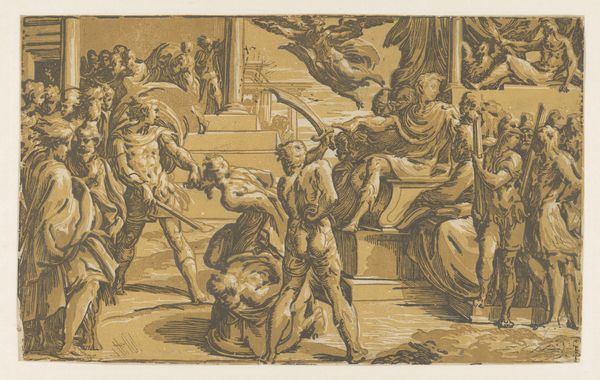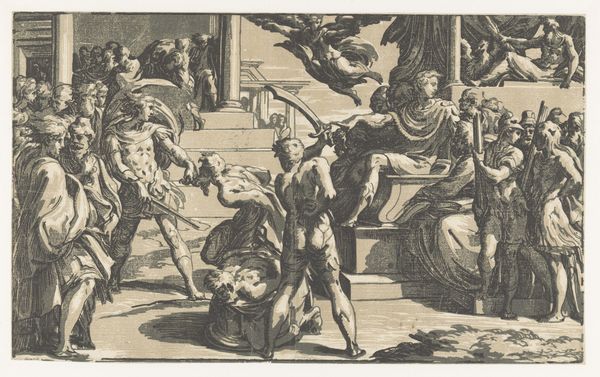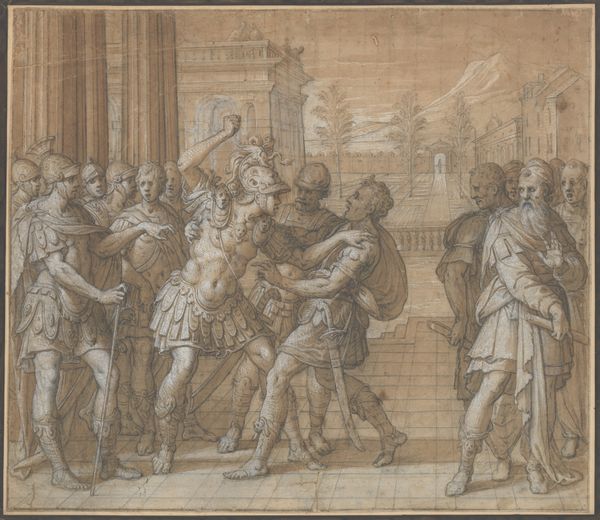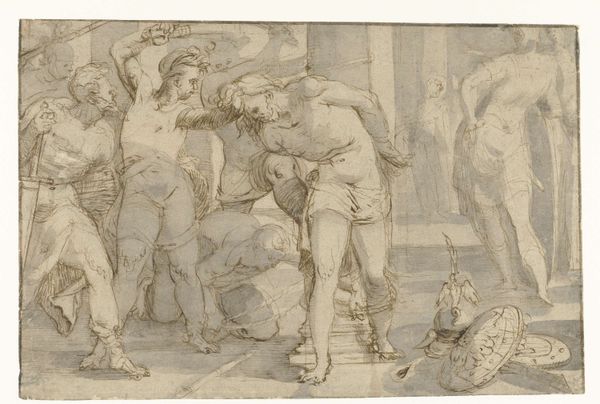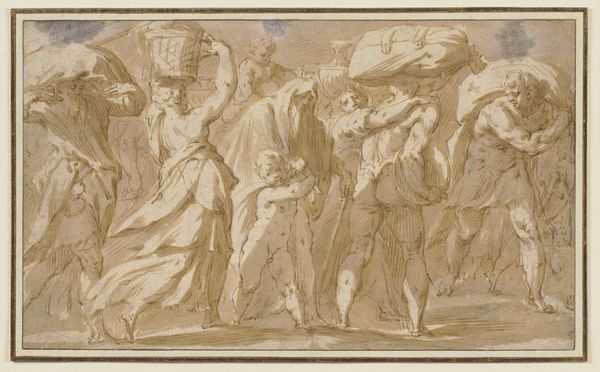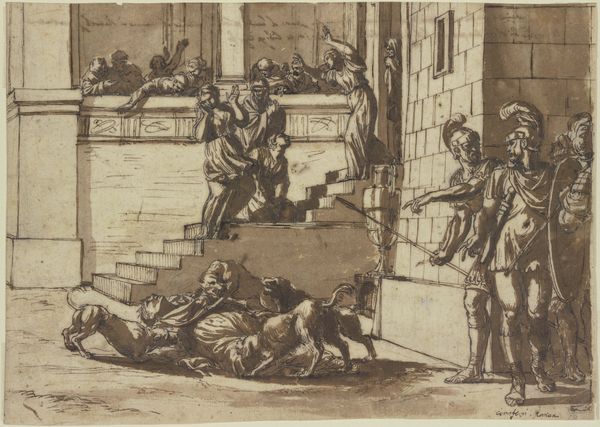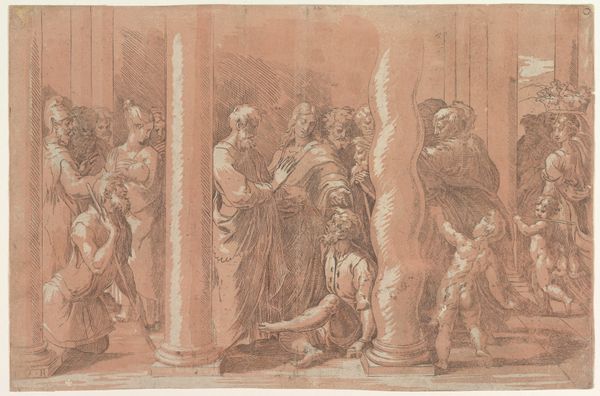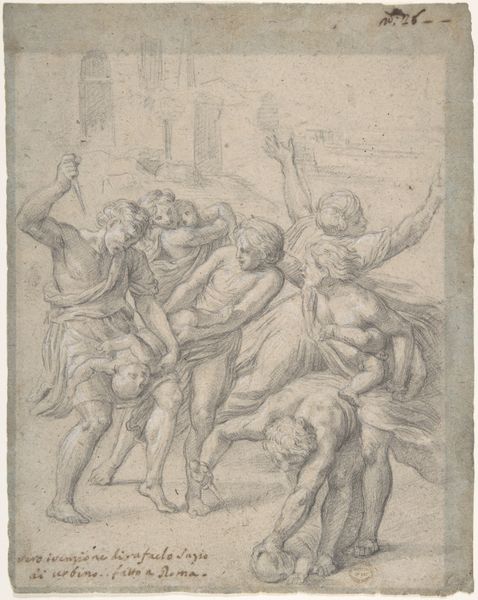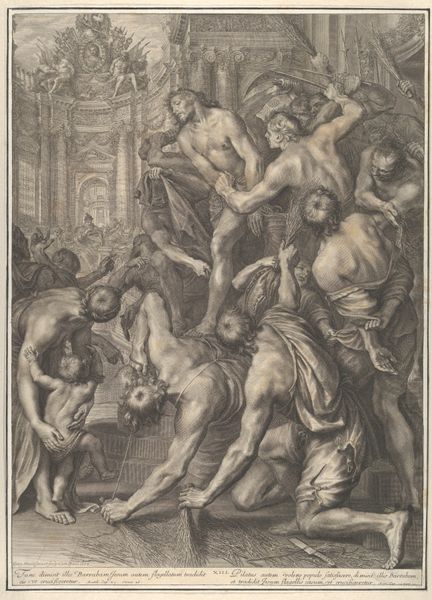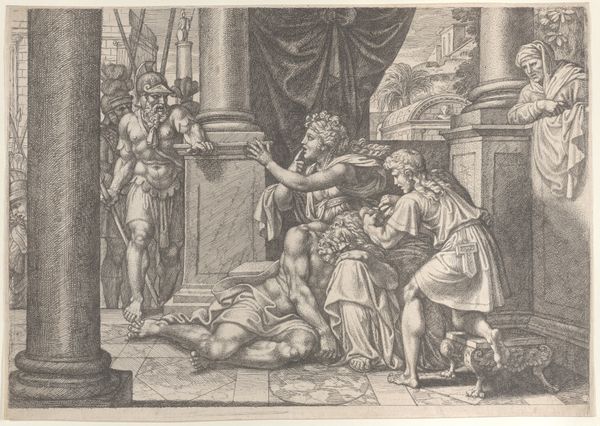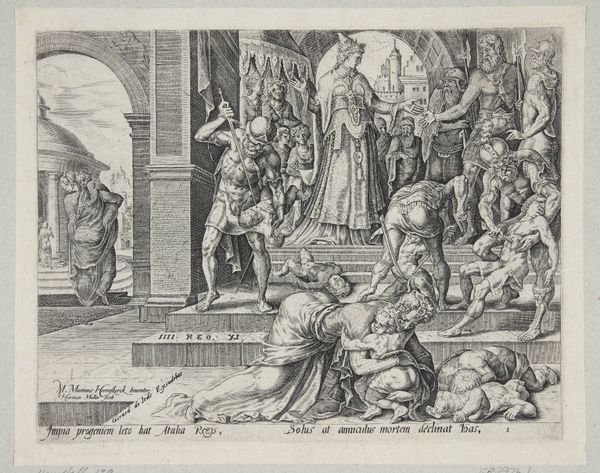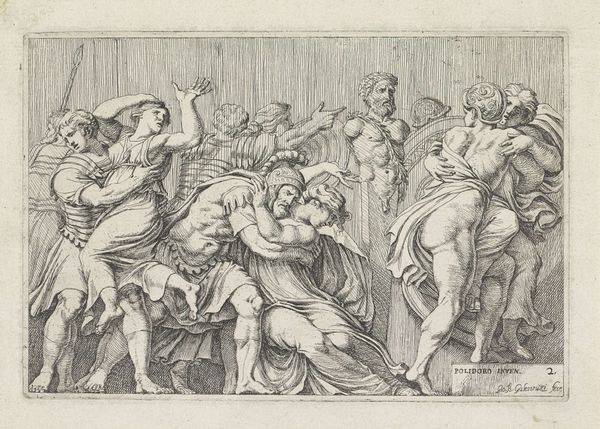
print, engraving
#
narrative-art
# print
#
mannerism
#
figuration
#
linocut print
#
ink drawing experimentation
#
history-painting
#
italian-renaissance
#
engraving
Dimensions: height 300 mm, width 483 mm
Copyright: Rijks Museum: Open Domain
Curator: This print, attributed to Antonio da Trento and dating from about 1520 to 1550, depicts *The Martyrdom of Saints Peter and Paul*. Editor: What strikes me immediately is the almost theatrical arrangement of the scene. Despite the solemn subject, there’s a formality to it—like a stage set. Curator: Indeed. Considering the socio-political climate of the era, where religious narratives were frequently utilized to reinforce power structures, the composition intentionally emphasizes authority and divine will. The figures, arranged almost like classical statuary, contribute to this effect. Notice the gaze of the central figure, seemingly accepting their fate as something greater than themselves, maybe as an important symbol? Editor: Definitely. The upward gaze carries a visual weight—leading your eye to the heavens above. The artist masterfully uses perspective to place the martyrdom within a larger cosmological order. The sword above and the downward thrust mimics a divine and necessary sacrifice. Curator: Also, consider the material. Engravings like this served a crucial role in disseminating visual information. Its relatively reproducible nature allowed for a broader audience to engage with religious iconography and narratives, extending influence and consolidating religious doctrine, as was expected from narrative art from this time. Editor: I think you are absolutely correct, but one thing that also strikes me is that print has a dreamlike quality created by its medium, it isn’t a painting of a bloody spectacle. The delicate lines and monochromatic tones soften what would otherwise be a harsh and disturbing scene. And this evokes a sense of sorrowful beauty that heightens its emotional impact. Curator: An insightful observation. While rooted in the socio-religious context of its time, the print's aesthetic choices demonstrate a move toward accessibility, fostering connection beyond simply political or ecclesiastical doctrine. Editor: Well, exploring both the visual symbols and the context adds another layer of meaning to an artwork like this one. Thank you for enriching my understanding. Curator: Absolutely. Delving into history, visual language, and materials empowers us to read an image through new interpretative possibilities.
Comments
No comments
Be the first to comment and join the conversation on the ultimate creative platform.
